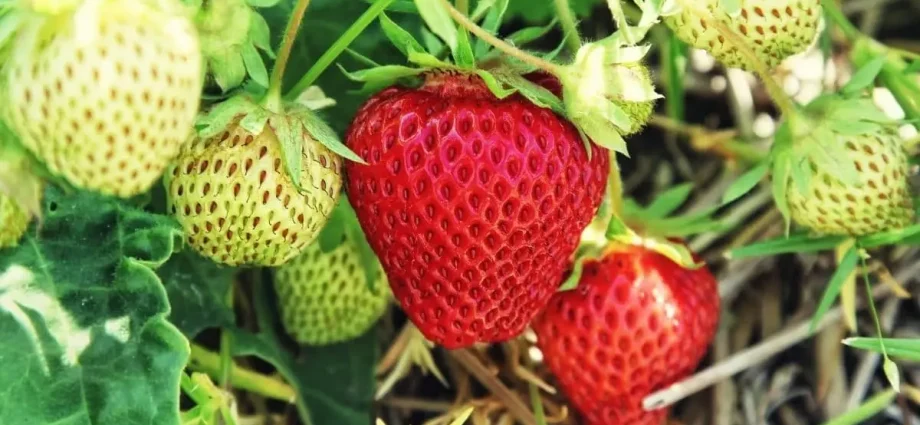Contents
Undoubtedly, one of the most delicious berries that can be grown in the country is strawberries. But growing it takes a lot of effort and time, and sometimes nerves, but in almost all cases the result is worth it. But not every gardener knows how to properly grow strawberries, so we hope that this article will make it easier for novice gardeners or gardeners. We will tell you the general rules and some secrets of growing strawberries, while covering the whole range of actions – from choosing a variety and a site for a plant to tips on caring for it.
Variety choice
So, first of all, you need to decide on the variety whose taste of berries you would like to enjoy. And to do this is not as easy as it seems to many, because after familiarizing yourself with the variety of types of strawberries grown in our area, you will be at a loss and will hardly be able to give preference to any variety. To simplify your task, make a kind of list where you write down your preferences: the taste of berries, their size, variety yield, ripening period.
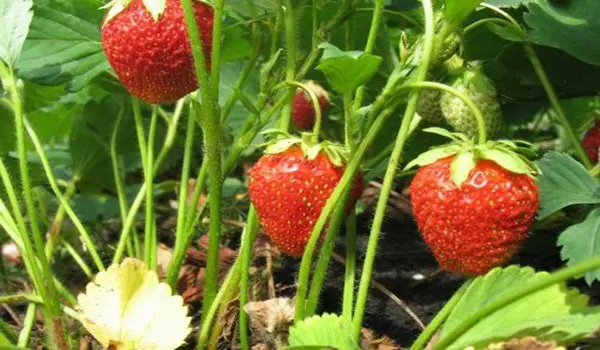
Using these criteria, it will be much easier for you to choose the right variety. It is very good if you have the opportunity to try growing several varieties. If possible, contact an experienced gardener for advice.
How to choose a place to land?
Your next step is choosing a landing site. You must first think over everything well, since good conditions are needed regarding soils, climatic characteristics, and nutrients. Not all soils are suitable for strawberries, it is better to grow on medium loamy soils, they are quite fertile. The area under the strawberries should be flat, it is recommended to dig up the area under the plant, level it so that the soil is soft. There is a trick that will help get rid of snails – sprinkle a thin layer of sand on top.
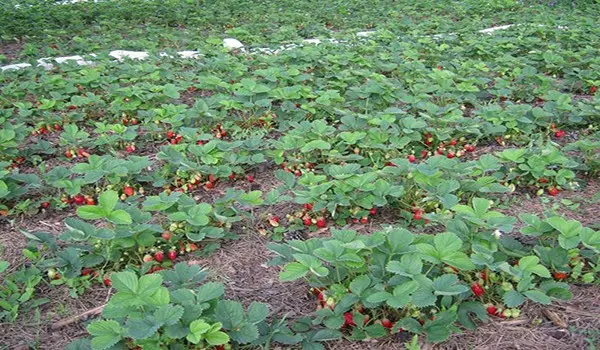
The site should receive a lot of sunlight, but at the same time it should be well protected from the winds, since the wind will blow away the snow in winter, and significant snow accumulation is the key to a successful wintering of plants. In advance, about a month in advance, the place should be cleared of weeds and a moderate dose of compost or humus should be applied, and potash and ammonia fertilizers should be applied just before planting. It is highly recommended to take into account crops that have grown in the selected area before.
Hint: strawberry seedlings grow very well after legumes, parsley, garlic, but take root extremely poorly in the soil where cucumbers, cabbage, tomatoes or potatoes were previously grown.
What time to plant?
After the landing site, you need to choose the right time. It is better to plant seedlings in spring (late April – early May, while taking into account the specific climatic conditions of your region so that the plants do not die during late frosts), but it can also be done in autumn (in this case, it is advisable to do this before mid-September, approximately 3-4 weeks before the first frost).
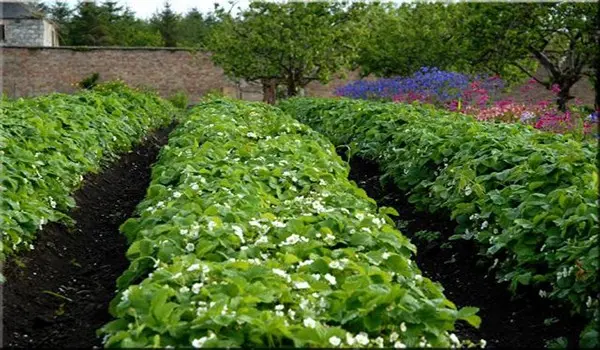
If you decide to plant in the summer, then you need to do this on a cloudy day, if hot days have already come, then late in the evening. If you decide to grow remontant strawberries from seeds, you must also follow the rules, think through everything carefully and scrupulously execute.
For planting, use pre-prepared soil with high humidity (about 80%), also prepare the most suitable containers (for example, there are special plastic containers with a diameter of 10-15 cm). Next, you need to pour the seeds on top, while lightly sprinkle with dry earth and irrigate a little with water.
So you reproduce the conditions under which the seed grows in nature as much as possible. Seeds require constant sunlight, which contributes to their accelerated growth. After about 3 weeks, the first shoots will appear that need periodic watering.
What to fertilize?
The yield of your “plantation” will largely depend on how correctly you apply fertilizer. They need to be applied not only at planting, but every year. In advance, about a month in advance, the place should be cleared of weeds and a moderate dose of compost or humus should be applied, and potash and ammonia fertilizers should be applied just before planting.
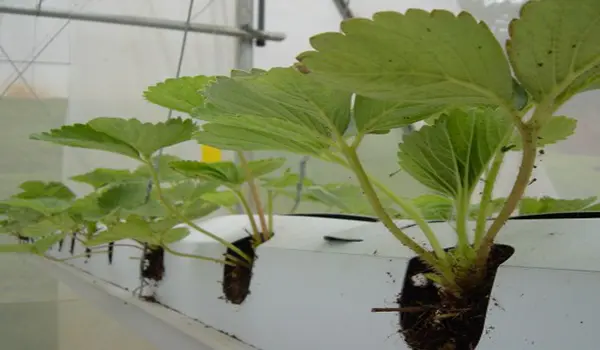
The applied fertilizers will last for a year, so there is no need to feed more. In the second year, experienced gardeners apply organic and mineral fertilizers, the dose should not be greater than when planting (about 20 g of potassium and up to 40 g of ammonia, humus somewhere around 3-4 kg). They fertilize in the same way in the fourth year, but in the third year only mineral fertilizers are applied. Don’t forget about spring mulching.
When to water?
Strawberries need constant abundant watering, although everything here depends on the amount of rainfall, because if there is a lot of rain, then the moisture in the ground may be quite enough for the normal development of remontant strawberries. If the weather is constantly dry, then it is necessary to water immediately after planting and the beginning of intensive leaf growth and before flowering. because you can not do this during flowering. The best time of day to water is evening or early morning.
Watering should be plentiful, but not excessive, because it is also harmful. The amount of moisture should be as optimal as possible, the taste of the fruit depends on it (with a lack of moisture, the berries will be slightly sour).
How to speed up maturation?
But not only abundant watering and fertilizers will help the early ripening of strawberries, there are other ways. The easiest way is to grow strawberries in greenhouses, the second way is to grow under a film, which will also make it possible to harvest about 10 days earlier.
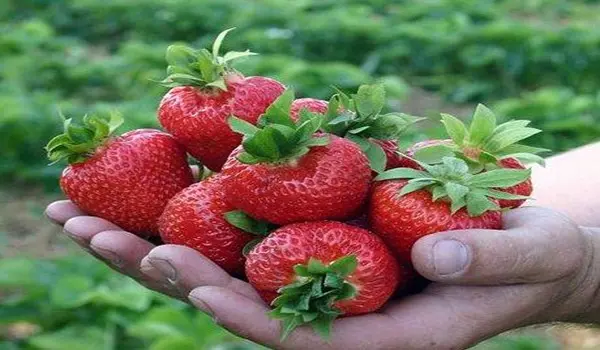
Both black and white or transparent film are used, each has its own advantages and disadvantages. The main advantage of the black film is the absence of weeds, but plants may “burn out”, when using white film, the opposite is true: weeds will appear, but there is no risk of “burning out”.
Optimal breeding method
Strawberries bear fruit for a couple of years, so if you want to grow them all the time, you need to learn how to propagate them. You can do this in one of three ways: seeds, whiskers or division, whichever method suits you best. The first method is little used by ordinary gardeners, since it requires scrupulousness, it is not suitable for all varieties, because some properties may be lost when grown from seeds.
By dividing plants, as a rule, remontant varieties are propagated, because they give little mustache. For this process, old bushes (three-four-year-old) are used, because it is in these that increased branching of the shoots is observed. The selected bush is divided in such a way that each has an intact horn and at least 3-4 leaves. Newly formed elements are transplanted to a new place.

The most common way (probably because of its simplicity) is to breed with a mustache. The first of them appear after flowering, but a huge part after fruiting. Mustaches should be removed, leaving only those that you want to use for breeding.
After a while, they will begin to take root, sockets will appear. Only after rooting can the ends of the mustache be cut off, leaving the strongest rosette. After a while, feel free to transplant to a new place. We hope that these tips on growing and caring for strawberries will help you in your difficult gardening business, and soon you will be able to tell others how to grow strawberries yourself.
Video “Growing strawberries. The right approach”
A video from an expert in the field of growing strawberries on a large scale, he will explain how to act after a harsh winter, what preparations should be used to protect plants from diseases.










